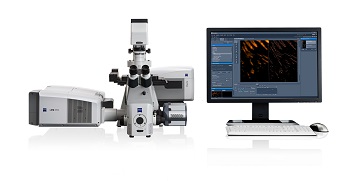ZEISS and the Howard Hughes Medical Institute’s Janelia Research Campus have signed an exclusive license agreement for the commercialization of Bessel beam plane illumination microscopy, also called lattice light sheet microscopy.

The fluorescence imaging method was invented by Dr. Eric Betzig, group leader at the Janelia Research Campus in Ashburn, Virginia, USA. Bessel beam plane illumination microscopy allows high-speed 3D fluorescence imaging of living cellular and multicellular specimens with nearly isotropic spatial resolution, low photobleaching and low photodamage.
The technology uses special beam conditioning of the light sheet illumination. Enabling very thin illumination beams, it makes light sheet technology capable for applications in cell biology. Bessel beam plane illumination microscopy is extending non-invasive imaging which already is a common feature of the ZEISS light sheet microscope Lightsheet Z.1. The method offers a resolution better than existing technologies such as spinning disk. Users of the technology will be able to watch cellular and sub-cellular division processes in 4D – at ultra-high spatial and temporal resolution that was never achieved before with fluorescence imaging.
HHMI
The Howard Hughes Medical Institute plays an influential role in advancing scientific research and education in the United States. Its scientists, located across the United States, have made important discoveries that advance our fundamental understanding of biology and its relation to human disease. In a complementary program at HHMI's Janelia Research Campus in Loudoun County, Virginia, leading scientists are pursuing long-term, high-risk, high-reward research in a campus designed to bring together researchers from disparate disciplines. The Institute also aims to transform science education into a creative, interdisciplinary endeavor that reflects the excitement of real research. For more information, visit www.hhmi.org.